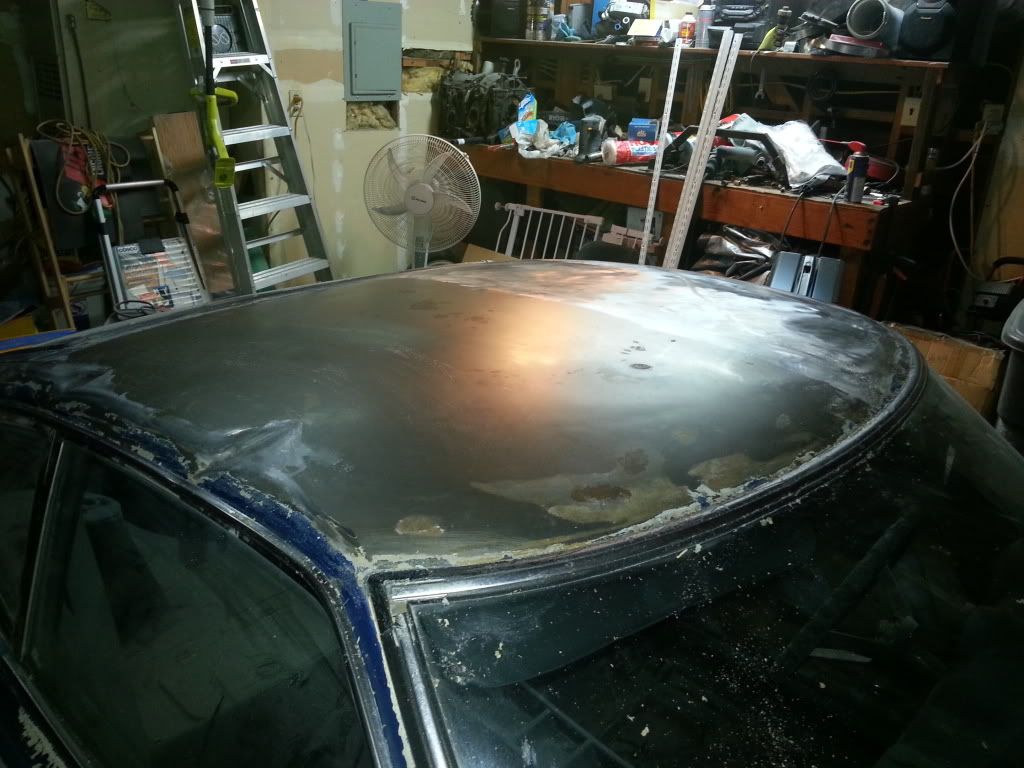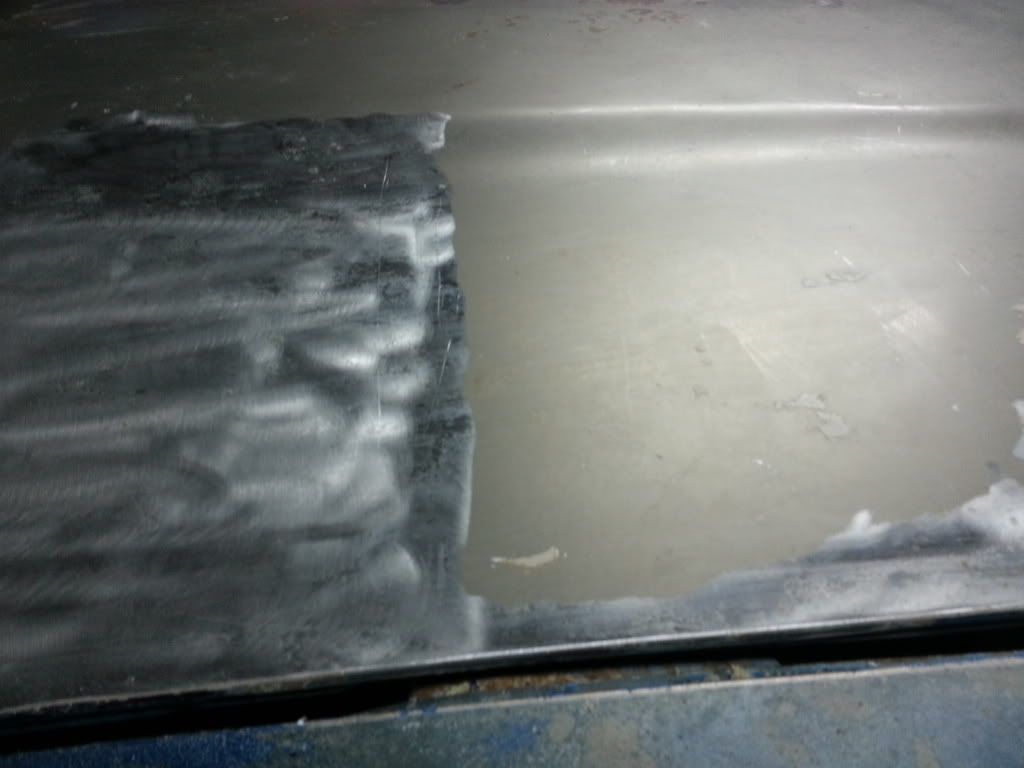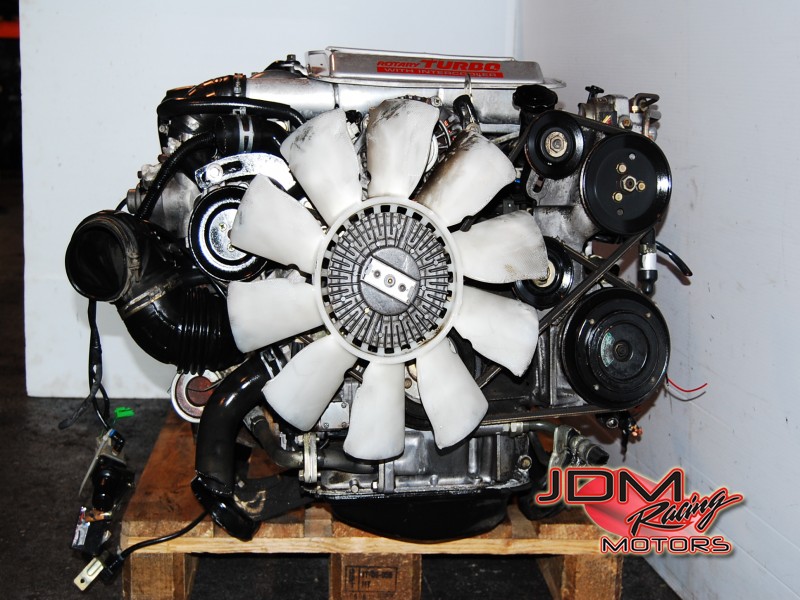So the roof is done, aside form the window frame edges. Waiting to do those until I can find a safe way to remove the chrome trim. Have to be careful because replacing those rain guards is expensive since their out of production.
Now that the paint is gone, we can try to fix that dent above the passenger door. Hopefully dry ice and a heat gun will make pull the dent. More on that later.
The hood is at about 90%. The bottom edge needs some more gel. Had to stop though. Once the sun hits the metal it gets too hot and the gel melts/evaporates before it can work it's voodoo magic. For the most part, no surprises on the hood.
The stripping gel does have one odd affect that I need to figure out whats up with.
On the left, a section of hood that was grindered with an abrasive stripping disc. The right, stripping gel and a straight edge scrapper.
Their both bare metal, but I worry that there's a noticeable surface difference that will affect primers ability to grip into the metal. I suspect I still need to grinder over the car, but now there won't be 70lbs of lead paint dust in my garage.
Also, looking into hood scoops. Thinking about the Datsun Competition Scoop. Requires a big hole cut in the hood, but a great way to let hot air out of the hood, and maybe even help with aerodynamics.
Sunday, June 30, 2013
Thursday, June 27, 2013
http://www.speedhunters.com/2013/06/70s-spirit-the-imsa-240z/
A great article on a historic race IMSA 240z race car that still see's regular track action.
A great article on a historic race IMSA 240z race car that still see's regular track action.
Wednesday, June 26, 2013
Body: Update, paint stripping!
Oh man. Game changer. So it took me an hour to do half the roof.. I did this tonight.
That's the other half of the hood. I did this in about 30 minutes. Not done, but damn close. How'd I do it?
With this.
You let this super stripper gel soak on the surface for 15 minutes and the paint starts to do this.
Then, this.
It bubbles and lifts off the surface. It pulled a base primer, factory paint, aftermarket primer and aftermarket paint up. By separating the primer from the bare metal it makes it possible to pull the paint off in strips with a scraper.
This will speed up the stripping process big time. Now instead of grinding on the entire body I can simply grind in a few small touch up sections.
That's the other half of the hood. I did this in about 30 minutes. Not done, but damn close. How'd I do it?
With this.
You let this super stripper gel soak on the surface for 15 minutes and the paint starts to do this.
Then, this.
It bubbles and lifts off the surface. It pulled a base primer, factory paint, aftermarket primer and aftermarket paint up. By separating the primer from the bare metal it makes it possible to pull the paint off in strips with a scraper.
This will speed up the stripping process big time. Now instead of grinding on the entire body I can simply grind in a few small touch up sections.
Tuesday, June 18, 2013
Engines: 13b Rotary. No really!
Sorry for the long gap. New job, summer heat, sisters wedding, blah blah blah. I'm back for a little while.
While I was off, I kept thinking about engines. Yes, the RB25det will be a great choice. We have a crossmember and everything.
But then I saw this.
So, when I first thought about a rotary I thought about the two really big dogs. The Twin Turbo 13b-REW and the 20b-REW Three rotor. I forgot all about the TurboII RX-7 that had a single turbo 13b-RE making about 200hp. What interests me is those engine mount brackets. See how they angle diagonally. Very similar to the crossmember for the RB25det I have.
With a little bit of work, it might be very possible to put a 13b in our chassis. The 13b is a very desirable choice due to it's low size and weight with big power potential. A fully dressed turbo 13b with transmission should weigh in around 400-450lbs.
Why a 13b? Is it any good?
Very good. A healthy 13b Turbo with a proper setup can put 300-350 wheel horsepower down with lower boost numbers thanks to the unique way the rotary engine spins. The also sound amazing. Plus there's only three moving parts.
Listen to this sound.
So, there's still some measurements to make to see if my theory is right.
While I was off, I kept thinking about engines. Yes, the RB25det will be a great choice. We have a crossmember and everything.
But then I saw this.
So, when I first thought about a rotary I thought about the two really big dogs. The Twin Turbo 13b-REW and the 20b-REW Three rotor. I forgot all about the TurboII RX-7 that had a single turbo 13b-RE making about 200hp. What interests me is those engine mount brackets. See how they angle diagonally. Very similar to the crossmember for the RB25det I have.
With a little bit of work, it might be very possible to put a 13b in our chassis. The 13b is a very desirable choice due to it's low size and weight with big power potential. A fully dressed turbo 13b with transmission should weigh in around 400-450lbs.
Why a 13b? Is it any good?
Very good. A healthy 13b Turbo with a proper setup can put 300-350 wheel horsepower down with lower boost numbers thanks to the unique way the rotary engine spins. The also sound amazing. Plus there's only three moving parts.
Listen to this sound.
So, there's still some measurements to make to see if my theory is right.
Subscribe to:
Comments (Atom)










